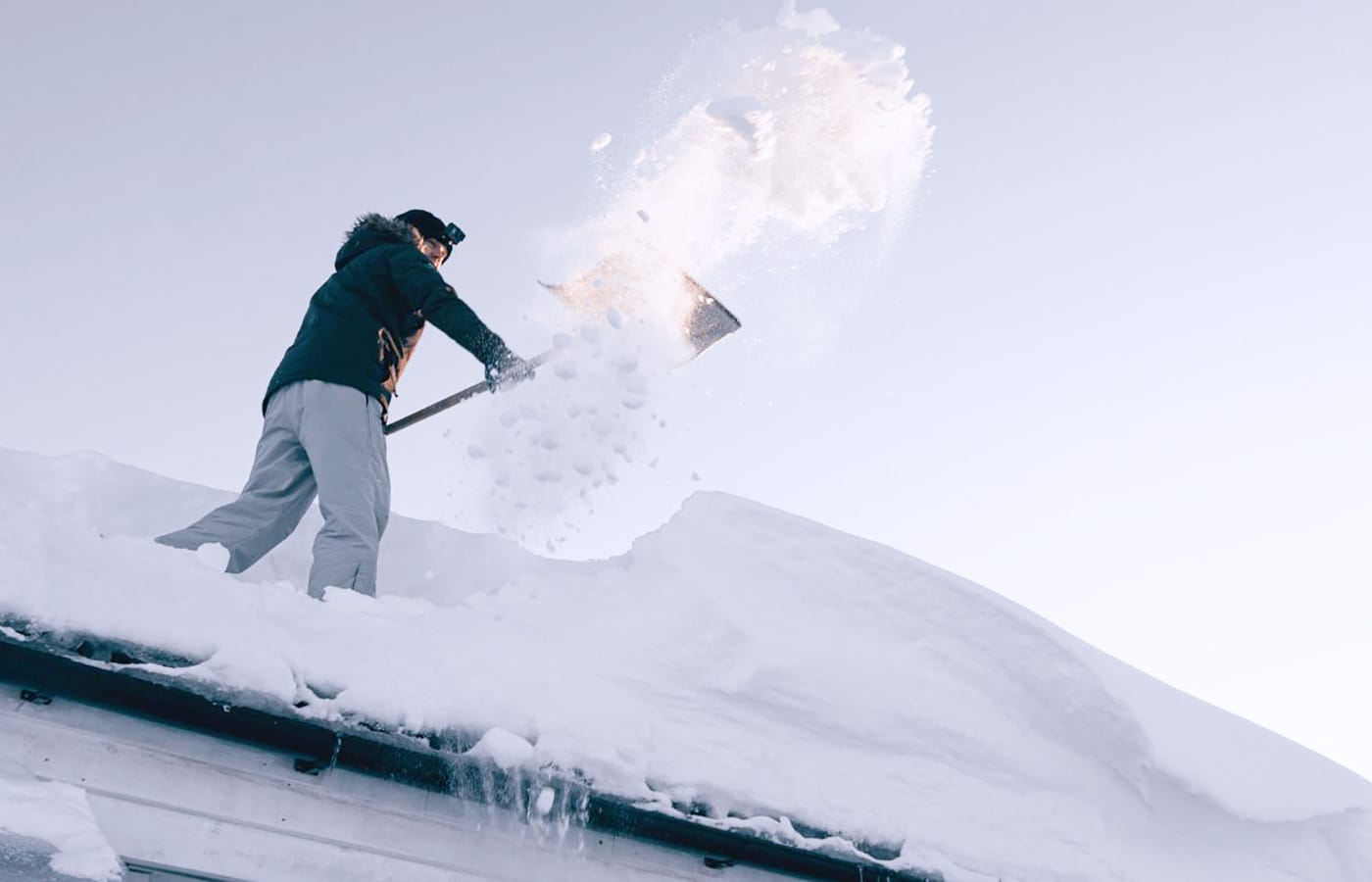Tips to Prevent Winter Damage

The harsh winter elements can present potential challenges for homeowners, especially if you are in the process of selling your home. Cold weather, ice, snow, and freezing temperatures increase the risk of damage to your home without adequate preparation. These preventative maintenance tips can help keep your home warm, reduce energy costs, and avoid potentially high expenses due to winter damage.
Inspect and Clean Gutters
Winter brings frequent rain, snow, and freezing conditions, which can lead to ice dams in clogged gutters. Ice dams prevent proper drainage and increase the risk of water backing up and damaging your roof, walls, and insulation. Here’s how to prep your gutters for winter:
- Remove leaves, twigs, and other debris to keep water flowing freely.
- After cleaning, test the gutters with a hose to ensure water flows freely through the downspouts and far enough away from the foundation.
- Installing gutter guards can help prevent debris accumulation, making future maintenance easier.
Seal Windows and Doors
Drafts from windows and doors cause your heating system to work overtime, leading to higher energy bills. Sealing windows and doors maintains a cozy indoor temperature and improves energy efficiency.
- Install weatherstripping around windows and doors to prevent drafts. Adhesive-backed foam tape is a quick and cost-effective solution.
- Seal smaller gaps around window frames and door jambs with caulk to reduce air leaks.
- If you live in an area with particularly harsh winters, storm windows and doors provide an extra layer of insulation.
Check and Insulate Your Attic
An improperly insulated attic leads to a chilly home and sky-high energy bills. Heat rises, so if your attic lacks insulation, warm air will escape, making it more challenging to maintain indoor temperatures.
- Ideally, you want around 10 to 14 inches of insulation in your attic, depending on your location and home structure.
- Use batt insulation or loose-fill insulation to fill gaps, keep heat inside, and reduce energy loss.
- Before adding insulation, check for any gaps around pipes, recessed lights, and chimneys that need sealing to prevent warm air from leaking.
Winterize Outdoor Faucets and Irrigation Systems
Frozen pipes are a common winter hazard that leads to burst pipes, flooding, and expensive water damage repairs. Protecting your outdoor faucets and irrigation systems prevents these issues.
- Remove all hoses from outdoor faucets, drain them, and store them indoors.
- Shut off the water supply to outdoor faucets and drain any remaining water to prevent freezing.
- Use faucet covers and foam pipe insulation to protect outdoor faucets and any exposed pipes from freezing temperatures.
Service Your Heating System
Your heating system will work hard during winter, and a poorly maintained heating system can lead to breakdowns, poor air quality, and higher energy costs.
- Have an HVAC technician inspect and service your heating system to ensure it’s running efficiently.
- Dirty filters restrict airflow, forcing the system to work harder. Replace or clean filters regularly to maintain optimal efficiency.
- If you notice any unusual sounds or smells, address them immediately. They can indicate potential issues that may worsen with time.
Trim Tree Branches and Clear Yard Debris
Heavy snow and ice can weigh down tree branches, causing them to snap and potentially damage your home or power lines. Preventing this hazard is an essential part of winter home maintenance.
- Focus on branches near your home, especially the roof, windows, and power lines.
- Remove dead trees or weak limbs that might not withstand a winter storm.
- Rake leaves and remove any debris that could become buried in snow, creating tripping hazards or preventing proper drainage.
Prepare for Snow and Ice
Ice and snow buildup can cause several issues, including slippery walkways, roof damage, and blocked vents. However, the right tools and supplies can eliminate these issues.
- Keep supplies of ice melt and sand to treat walkways and driveways. Avoid using rock salt, as it can damage concrete and harm pets.
- Make sure you have a sturdy snow shovel, and consider investing in a snowblower if you live in a high-snow area.
- In regions prone to heavy snow, roof heating cables can melt snow before it builds up and help prevent ice dams.
Protect Pipes in Unheated Areas
Pipes in unheated areas, such as basements, crawl spaces, or garages, are at higher risk of freezing. Protecting these pipes from the cold can prevent burst pipes and costly water damage.
- Use foam pipe insulation or heat tape to protect pipes in unheated spaces.
- If pipes run through the garage, keep doors closed to maintain a warmer environment.
- Allowing faucets to drip slightly during extreme cold can prevent pipes from freezing by keeping water moving.
Test Smoke and Carbon Monoxide Detectors
Winter often means increased use of heating systems and fireplaces, which can increase the risk of carbon monoxide and fire hazards. Working safety detectors are paramount.
- Test smoke and carbon monoxide detectors monthly to ensure they’re functioning.
- Replace batteries in all detectors at least once a year, ideally before winter.
- Smart smoke and carbon monoxide detectors offer added convenience, alerting you on your phone should there be an emergency.
Inspect the Roof and Chimney
Your roof and chimney are at the front line of winter weather exposure, so checking their condition can help you avoid leaks and prevent damage.
- Inspect your roof for damaged or missing shingles and promptly replace them to avoid leaks.
- Remove leaves, branches, or other debris that may trap moisture and lead to mold or ice dams.
- If you use your chimney frequently, have it professionally inspected and cleaned, as creosote buildup can pose a fire risk.
Winterizing your home might take a little time and investment. Still, it pays off significantly by reducing energy costs, preventing costly repairs, and keeping your home safe and comfortable.
Take a proactive approach by making a checklist of these steps, and start your winter home maintenance before the cold fully sets in. Proper planning will ensure that your home stays warm, safe, and well-protected all winter, allowing you to enjoy a worry-free selling experience.
Royal LePage® Meadowtowne Realty
6948 Financial Drive, Mississauga, ON L5N 8J4
(905) 821-3200
Let us put you in touch with a Real Estate Agent you can trust!
Have questions about selling real estate and don't know where to begin? Contact one of our agents today.Please Note: Information you supply in the contact form will be kept fully confidential.
